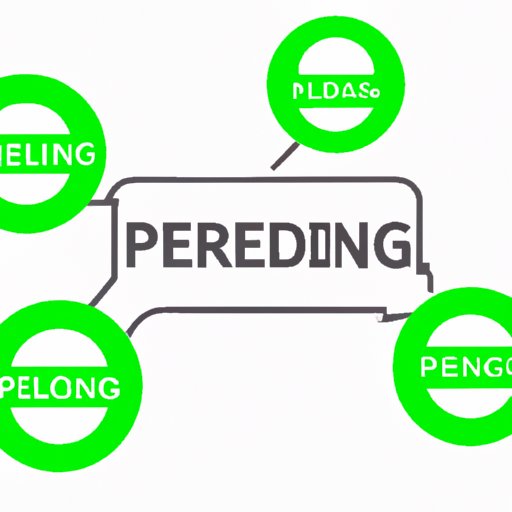How to Invest in Peer-to-Peer Lending: A Comprehensive Guide
Peer-to-peer (P2P) lending has become a popular investment option in recent years. It allows investors to lend money to borrowers through online platforms, earning interest on their investments. But with so many P2P lending platforms available, it can be overwhelming to know where to start. In this article, we will explore the basics of P2P lending, investment options, risk assessment, borrower evaluation, diversification, and monitoring of investments. By the end of this guide, you’ll have a better understanding of how to invest in P2P lending and how to maximize your returns.
Understanding the Basics of Peer-to-Peer Lending
P2P lending is a type of debt financing where individuals or groups lend money to borrowers directly through online platforms. These platforms act as intermediaries, connecting lenders to borrowers, and facilitating loans. The loans are usually unsecured and have higher interest rates compared to traditional loans.
The benefits of P2P lending include a higher return on investment, simplified investment process, and the ability to diversify your portfolio. However, there are also risks involved such as the potential for default, illiquidity, and lack of regulations.
Some popular P2P lending platforms include LendingClub, Prosper, Funding Circle, and Zopa. Each platform has its own set of features, fees, and risks, which we’ll discuss in more detail later in the article.
Analyzing Available Investment Options
There are two types of P2P lending platforms: traditional and direct. Traditional P2P lending platforms allow investors to fund a portion of loans, which are then combined to create a portfolio. In contrast, direct P2P lending platforms allow investors to select individual loans to fund.
Traditional P2P lending platforms offer automated investment tools that make investing more accessible for investors. The downside is that these platforms provide less control over investment decisions. On the other hand, direct P2P lending platforms allow for more control over investment decisions, but require more time and research to be effective.
Examples of traditional P2P lending platforms include LendingClub and Prosper. Some examples of direct P2P lending platforms are StreetShares and Peerform.
Risk Assessment
Investing in P2P lending comes with unique risks such as potential default, platform failure, and regulatory risk. To minimize these risks, investors should conduct due diligence on the P2P lending platform they choose to invest in. Investors should also consider factors such as borrower credit scores, loan purpose, and loan repayment terms.
One way to reduce risk is by diversifying your portfolio across multiple loans, borrowers, and platforms. It’s important to note that diversification does not eliminate risk entirely but can mitigate it. It’s also essential to stay updated on market trends and regularly monitor and manage your investments.
Evaluating the Borrower and Loan Characteristics
Investors can evaluate borrower and loan characteristics through P2P lending platforms, which provide information on borrower credit scores, loan purpose, and repayment history. Investors can also look at the loan grade and term, which can help determine the risk of default.
Key factors to consider when evaluating borrowers and loans include the creditworthiness of the borrower, the loan purpose, and the loan term. It’s important to note that higher credit scores, lower loan amounts, and shorter loan terms usually indicate lower risk. Investors should also consider the borrower’s debt-to-income ratio and their ability to repay the loan.
Diversification
Diversification is essential in P2P lending, as it helps mitigate risk. Investors should invest in loans across different borrowers, loan grades, and P2P lending platforms. This tactic ensures that a single default or platform failure does not have a significant impact on the entire investment portfolio.
Investors can also diversify their investments by investing in a range of loan amounts and terms. Higher-yield loans may come with a higher risk of default, so it’s important to consider the risk level when choosing loans to invest in.
Monitoring and Management of Investments
Monitoring and managing P2P lending investments is crucial to maximizing your returns and minimizing your risk. Investors should use investment tracking tools to monitor their investment portfolio’s performance and manage their risks. It’s important to stay updated on market trends, changes in regulations, and any platform updates or failures.
Investors should also be proactive in managing their investments. This involves regularly reviewing and rebalancing their portfolio, assessing the performance of their investments, and adjusting their investment strategy accordingly.
Conclusion
P2P lending is an attractive investment option for many investors, providing higher returns, diversification, and simplified investment processes. However, like any investment, there are risks involved. Investors should conduct due diligence on P2P lending platforms, evaluate borrower and loan characteristics, diversify their portfolio, and regularly monitor and manage their investments to maximize their returns.
Investing in P2P lending can be a profitable addition to a diversified investment portfolio, and by following the guidelines outlined in this article, investors can minimize risks and achieve their investment goals.
(Note: Is this article not meeting your expectations? Do you have knowledge or insights to share? Unlock new opportunities and expand your reach by joining our authors team. Click Registration to join us and share your expertise with our readers.)
